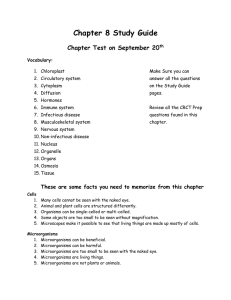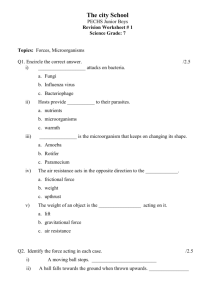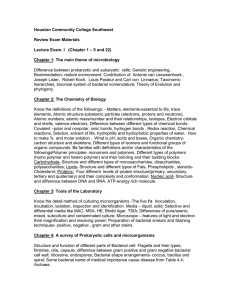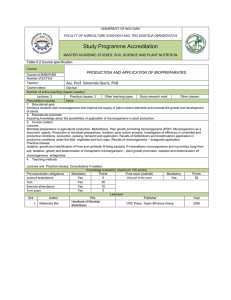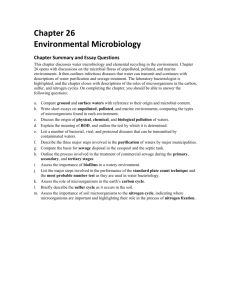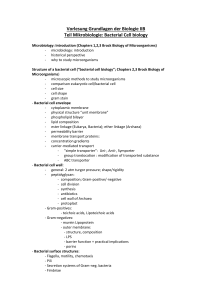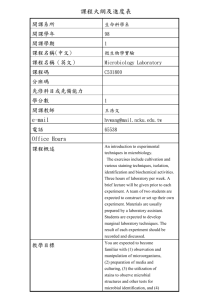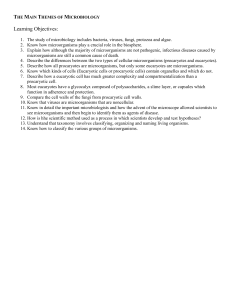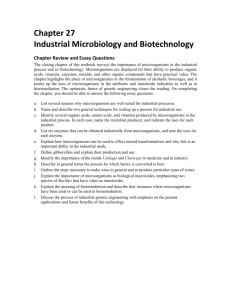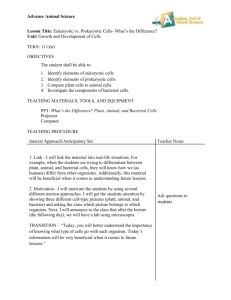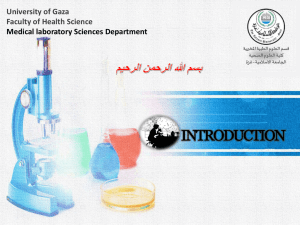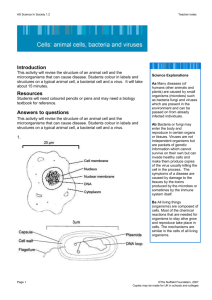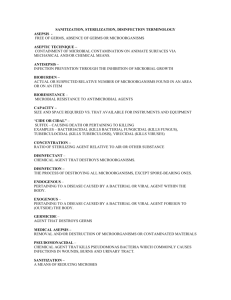Chapter 3: Concepts and Tools for Studying Microorganisms
advertisement
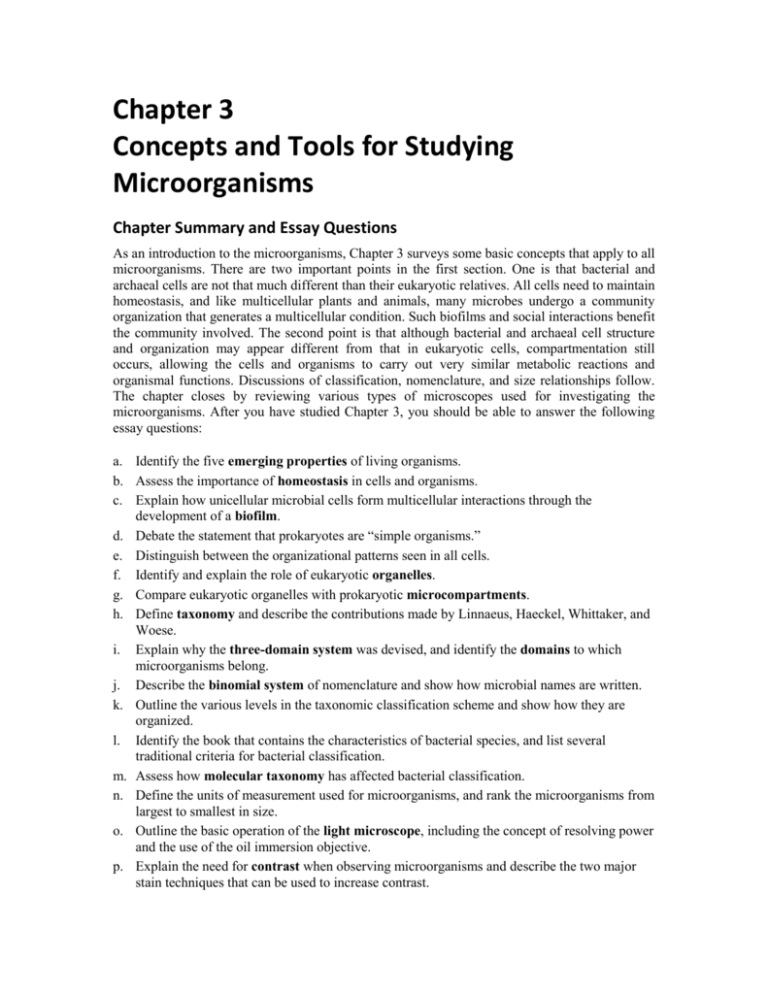
Chapter 3 Concepts and Tools for Studying Microorganisms Chapter Summary and Essay Questions As an introduction to the microorganisms, Chapter 3 surveys some basic concepts that apply to all microorganisms. There are two important points in the first section. One is that bacterial and archaeal cells are not that much different than their eukaryotic relatives. All cells need to maintain homeostasis, and like multicellular plants and animals, many microbes undergo a community organization that generates a multicellular condition. Such biofilms and social interactions benefit the community involved. The second point is that although bacterial and archaeal cell structure and organization may appear different from that in eukaryotic cells, compartmentation still occurs, allowing the cells and organisms to carry out very similar metabolic reactions and organismal functions. Discussions of classification, nomenclature, and size relationships follow. The chapter closes by reviewing various types of microscopes used for investigating the microorganisms. After you have studied Chapter 3, you should be able to answer the following essay questions: a. Identify the five emerging properties of living organisms. b. Assess the importance of homeostasis in cells and organisms. c. Explain how unicellular microbial cells form multicellular interactions through the development of a biofilm. d. Debate the statement that prokaryotes are “simple organisms.” e. Distinguish between the organizational patterns seen in all cells. f. Identify and explain the role of eukaryotic organelles. g. Compare eukaryotic organelles with prokaryotic microcompartments. h. Define taxonomy and describe the contributions made by Linnaeus, Haeckel, Whittaker, and Woese. i. Explain why the three-domain system was devised, and identify the domains to which microorganisms belong. j. Describe the binomial system of nomenclature and show how microbial names are written. k. Outline the various levels in the taxonomic classification scheme and show how they are organized. l. Identify the book that contains the characteristics of bacterial species, and list several traditional criteria for bacterial classification. m. Assess how molecular taxonomy has affected bacterial classification. n. Define the units of measurement used for microorganisms, and rank the microorganisms from largest to smallest in size. o. Outline the basic operation of the light microscope, including the concept of resolving power and the use of the oil immersion objective. p. Explain the need for contrast when observing microorganisms and describe the two major stain techniques that can be used to increase contrast. q. Compare the operation and function of dark-field, phase-contrast, and fluorescence microscopy. r. Identify the operational basis and use for the transmission and scanning electron microscopes.
